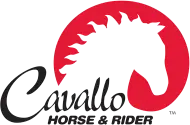Hay Facts
By Carole Herder
What, how and when you feed your horses is a very popular topic of conversation for us equine owners. Which type of hay? Where do I feed? How do I feed? How much feed? How often? I could write a realm of essays just on this subject but let’s tie it down to just a few simple ‘hay facts’ to start with.
What is quite vital to the nutrient values and quality of the hay is the stage of growth the grasses or legumes are in at the time when the hay is cut. Also the time of day and month of cutting can have a significant difference on the percentage of fructans stored in the hay (critical when feeding laminitic or insulin resisting horses). Other factors that can affect nutritional value include plant species, fertility of soil, harvesting methods and curing time.

The nutritional value of hay is related to leaf content. The leaves of grass hay have more nutrients and are more digestible when the plant is immature and growing, and more fiber when the plant has reached full growth. Legume leaves, by contrast, do not have the same structural function and don’t change much as the plant grows, but the stems become coarser and more fibrous.
It is rare to see horses have access to free choice hay, but this is one of the recommendations for keeping horses more naturally. If you leave a horse in a grass field, they have free choice grass, so why not free choice hay? I personally, don’t think horses would have a grassy paddock in the wild and would not get the amount of grass they would domestically. They are scavengers out there, eating shrubs off the sparse, arid tundra. Anyway, I like to see them work for their food a little so a great piece of horse equipment is the small-hole hay net. These can be spread around a track system ensuring slower eating and enticing movement in the hunt for that feeder, thus reducing the possibility of horses being overweight (we’ve all seen those grass bellies in summer!).
Coupled with the varying soil qualities, harvesting procedures, crop maintenances and geographical locations, although opinion varies here are some simple hay descriptions:
Alfalfa – easy to digest and high in protein, energy, vitamins and minerals.
Bermuda – when poor in quality, can be thought to cause impaction in horses so buyer beware (In fact, in all of this – buyer beware. Examine your hay and know it’s origin).
Clover – normal when very dry looking, often mixed with grass hay, be careful it doesn’t get damp as the mold can make horses sick.
Oat – thicker, tougher stalks so can take a while to chew (some horses may not like it), not a good option for insulin resisting animals.
Orchardgrass – not as nutrient rich as some other hays but is high in fiber.
Tall Fescue – can be damaging to pregnancy in mares.
Timothy – easy to digest, high in fiber and nutrients and low in calcium content, can be more expensive.
Ryegrass – commonly used in some areas but produced mainly for cattle due to higher starch/sugar content.
Don’t forget, because of the single-chambered stomach and cecum (hindgut) of the horse, they use bacterial processes to break down cellulose and thus are more sensitive to changes in feeds and the presence of molds or other toxins. They need a more consistent type and quality of hay. Grass hays are safe to feed free-choice but hays such as alfalfa or clover are legume hays and may be too high or out of balance in some minerals and proteins to be fed that way. I prefer more grass to legume, but a mix can work well for most horses.
